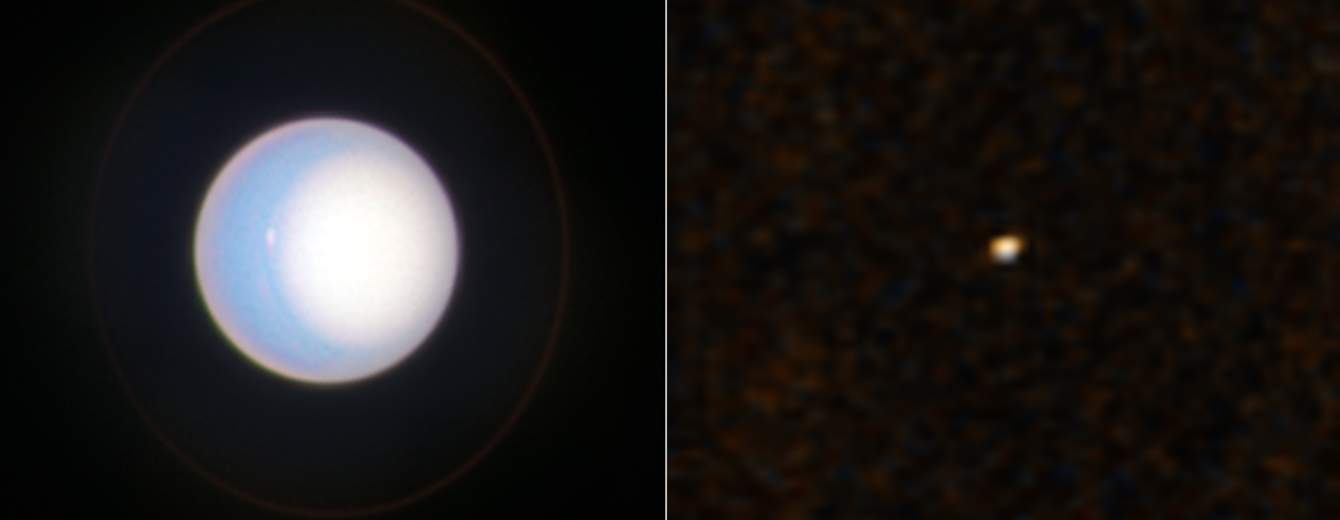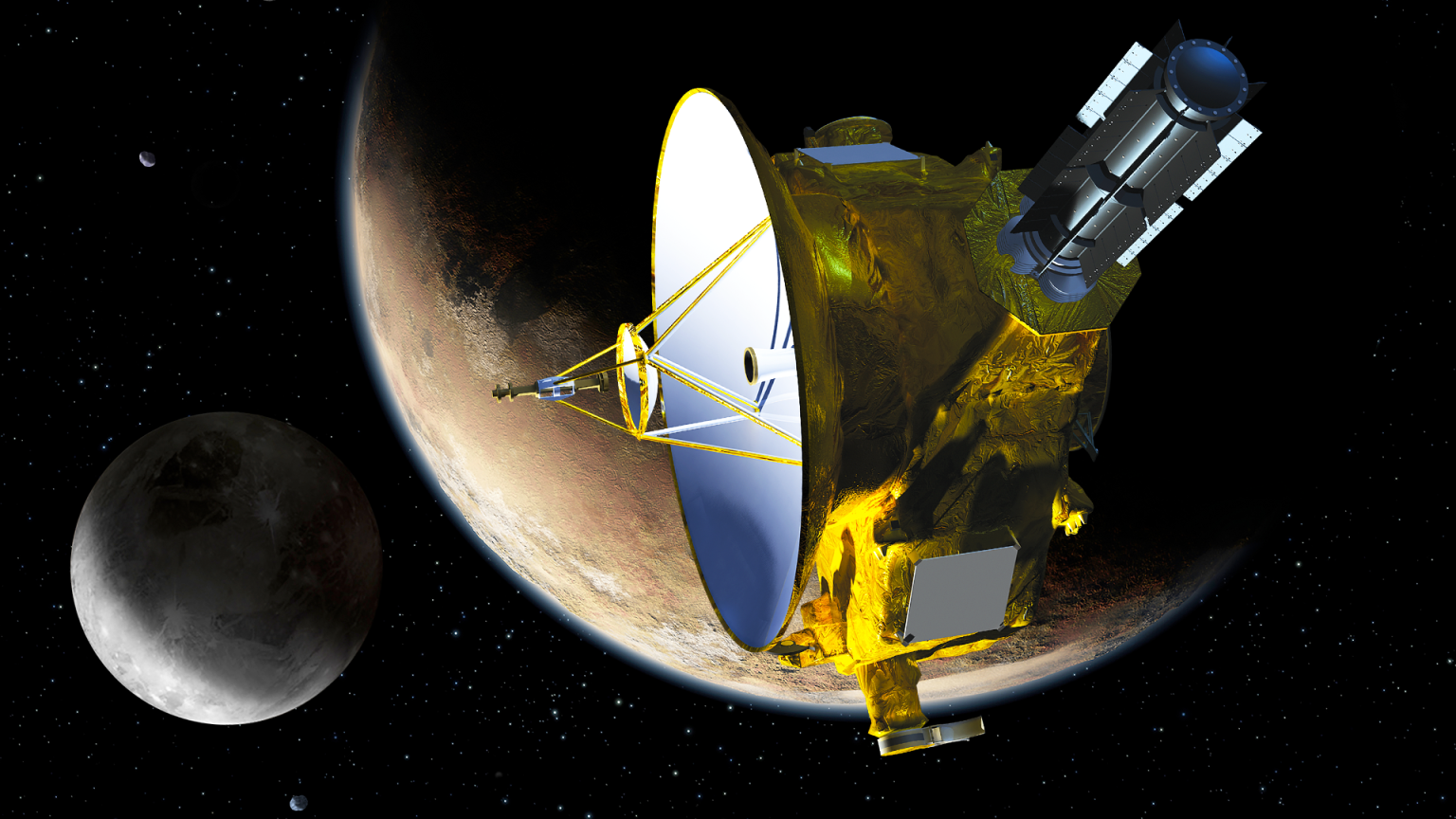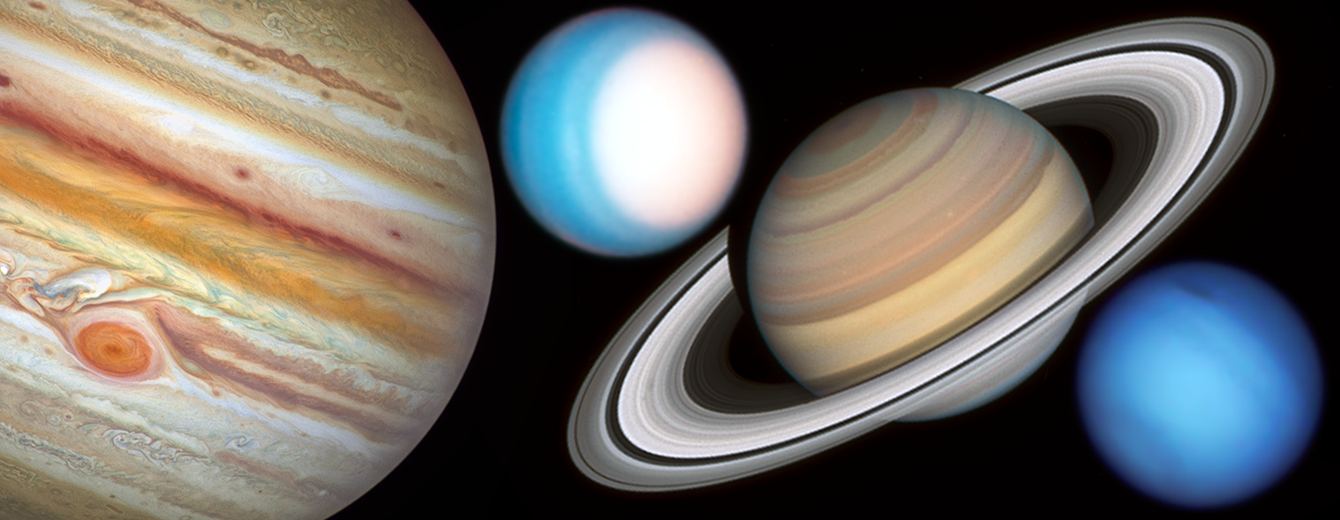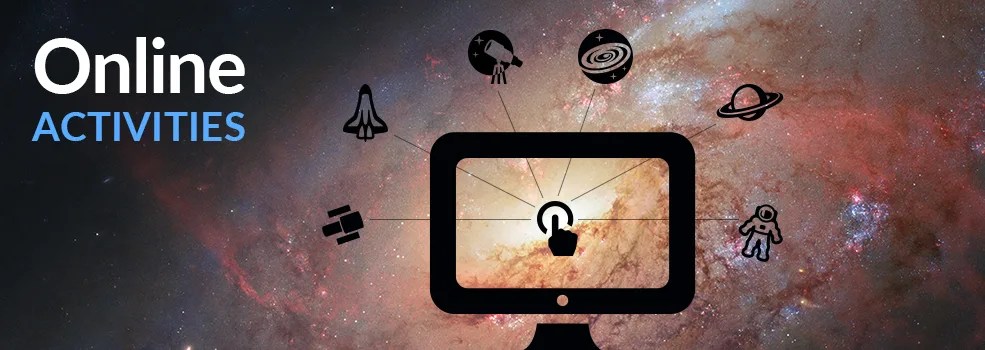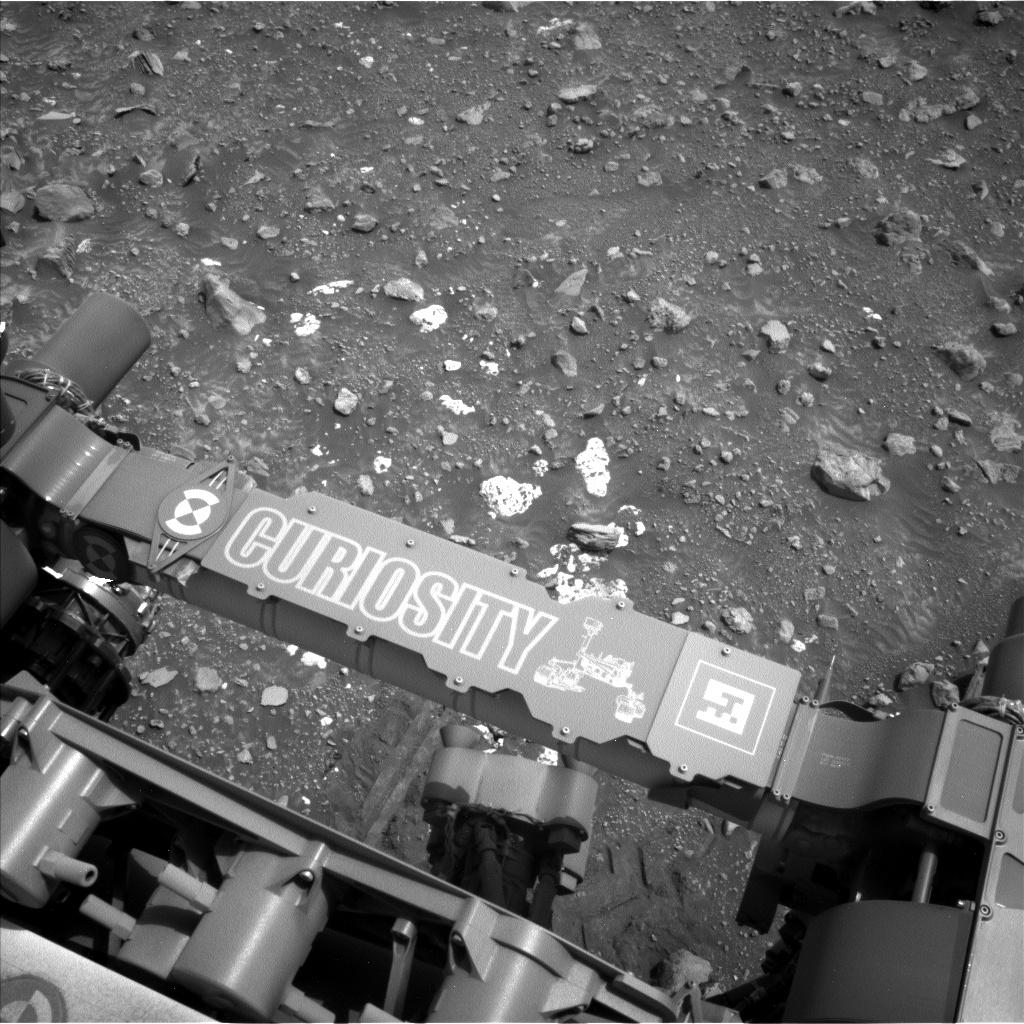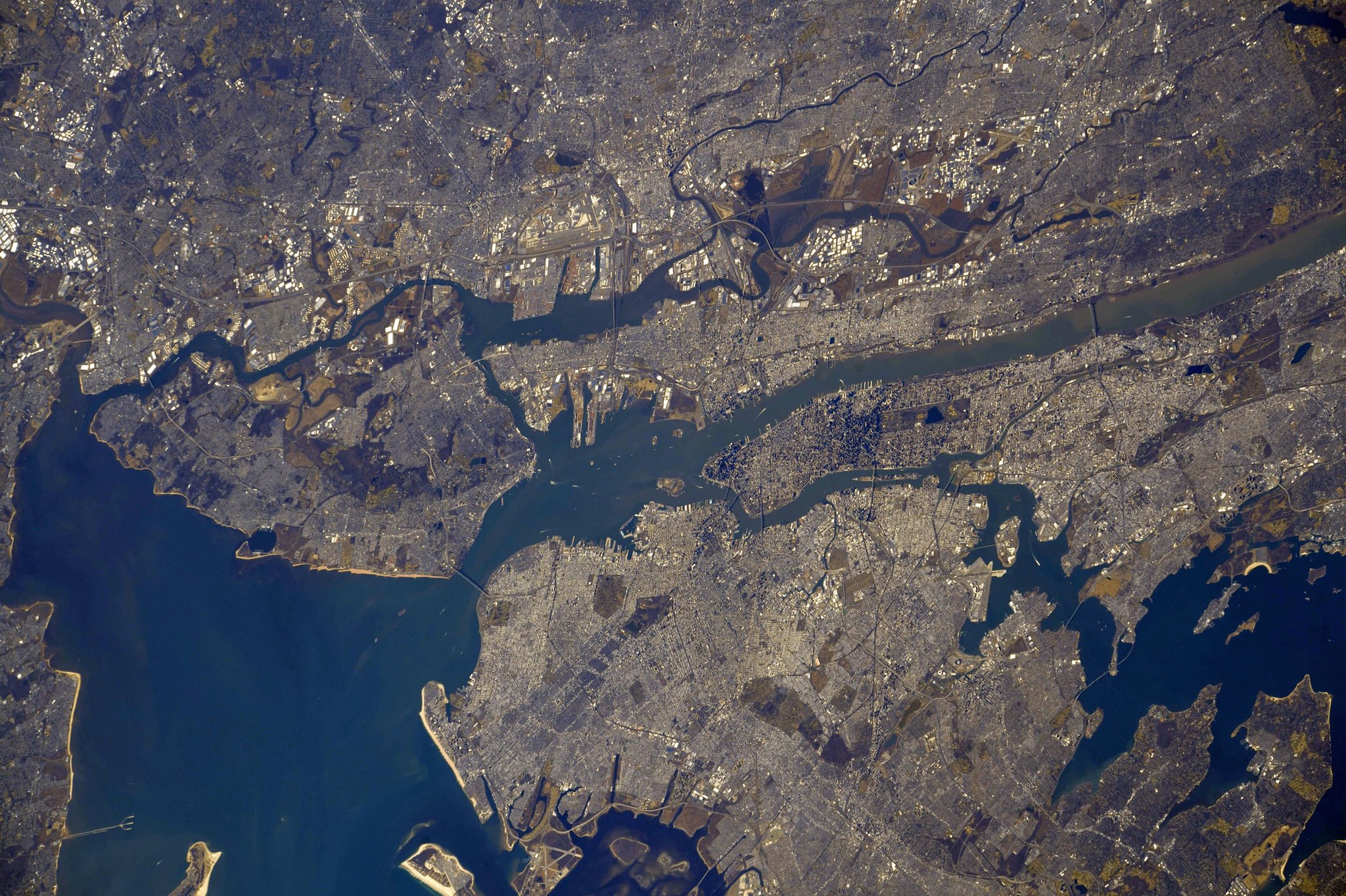NASA’s Hubble, New Horizons Team Up for a Simultaneous Look at Uranus
NASA’s Hubble Space Telescope and New Horizons spacecraft simultaneously set their sights on Uranus recently, allowing scientists to make a direct comparison of the planet from two very different viewpoints. The results inform future plans to study like types of planets around other stars. Astronomers used Uranus as a proxy for similar planets beyond our […]
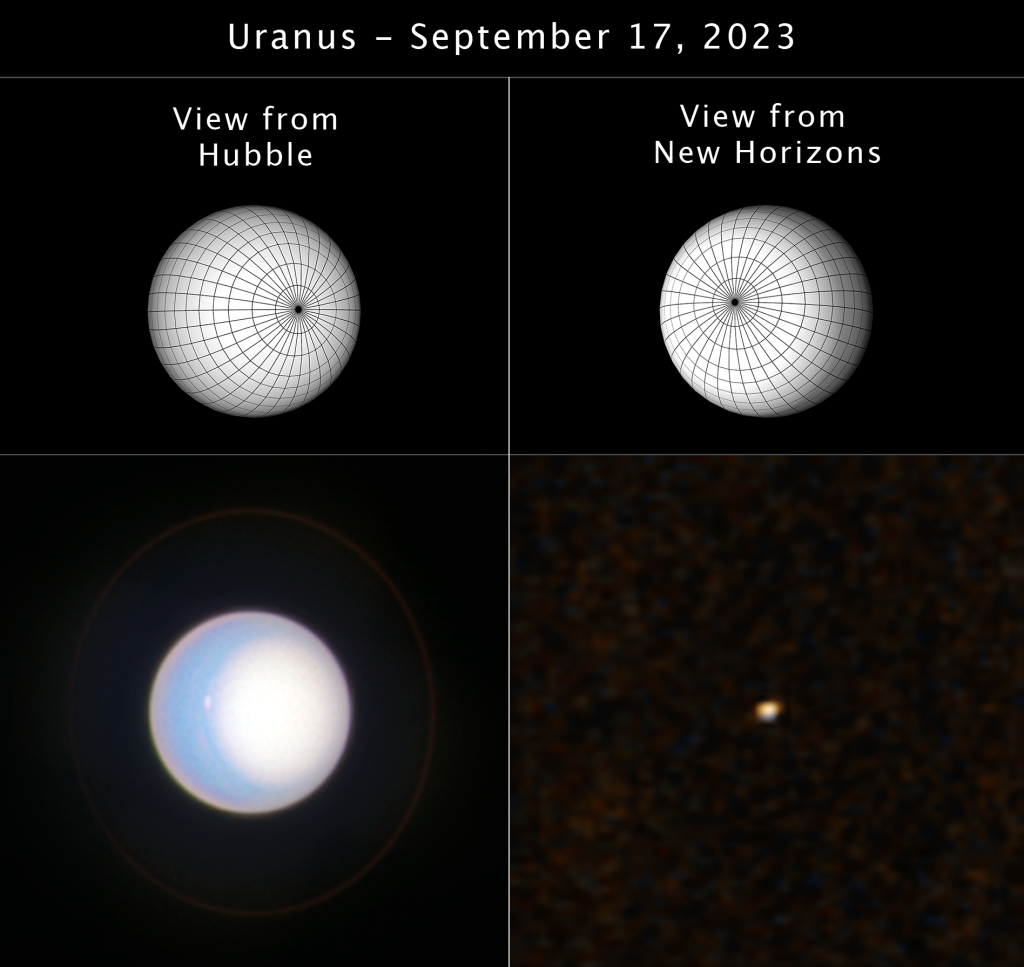
6 min read
NASA’s Hubble, New Horizons Team Up for a Simultaneous Look at Uranus
NASA’s Hubble Space Telescope and New Horizons spacecraft simultaneously set their sights on Uranus recently, allowing scientists to make a direct comparison of the planet from two very different viewpoints. The results inform future plans to study like types of planets around other stars.
Astronomers used Uranus as a proxy for similar planets beyond our solar system, known as exoplanets, comparing high-resolution images from Hubble to the more-distant view from New Horizons. This combined perspective will help scientists learn more about what to expect while imaging planets around other stars with future telescopes.
“While we expected Uranus to appear differently in each filter of the observations, we found that Uranus was actually dimmer than predicted in the New Horizons data taken from a different viewpoint,” said lead author Samantha Hasler of the Massachusetts Institute of Technology in Cambridge and New Horizons science team collaborator.
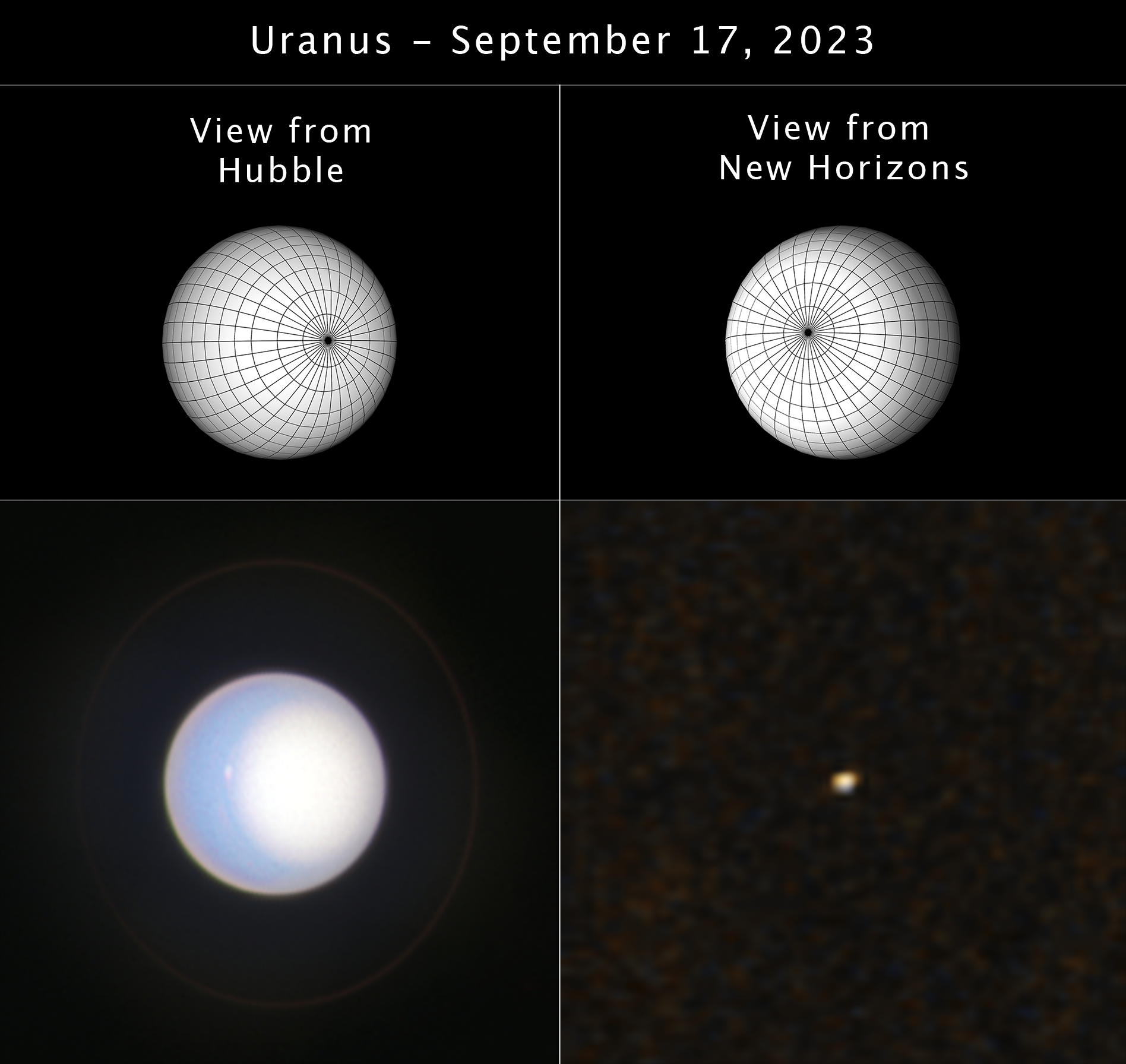
Direct imaging of exoplanets is a key technique for learning about their potential habitability, and offers new clues to the origin and formation of our own solar system. Astronomers use both direct imaging and spectroscopy to collect light from the observed planet and compare its brightness at different wavelengths. However, imaging exoplanets is a notoriously difficult process because they’re so far away. Their images are mere pinpoints and so are not as detailed as the close-up views that we have of worlds orbiting our Sun. Researchers can also only directly image exoplanets at “partial phases,” when only a portion of the planet is illuminated by their star as seen from Earth.
Uranus was an ideal target as a test for understanding future distant observations of exoplanets by other telescopes for a few reasons. First, many known exoplanets are also gas giants similar in nature. Also, at the time of the observations, New Horizons was on the far side of Uranus, 6.5 billion miles away, allowing its twilight crescent to be studied—something that cannot be done from Earth. At that distance, the New Horizons view of the planet was just several pixels in its color camera, called the Multispectral Visible Imaging Camera.
On the other hand, Hubble, with its high resolution, and in its low-Earth orbit 1.7 billion miles away from Uranus, was able to see atmospheric features such as clouds and storms on the day side of the gaseous world.
“Uranus appears as just a small dot on the New Horizons observations, similar to the dots seen of directly-imaged exoplanets from observatories like Webb or ground-based observatories,” added Hasler. “Hubble provides context for what the atmosphere is doing when it was observed with New Horizons.”
The gas giant planets in our solar system have dynamic and variable atmospheres with changing cloud cover. How common is this among exoplanets? By knowing the details of what the clouds on Uranus looked like from Hubble, researchers are able to verify what is interpreted from the New Horizons data. In the case of Uranus, both Hubble and New Horizons saw that the brightness did not vary as the planet rotated, which indicates that the cloud features were not changing with the planet’s rotation.
However, the importance of the detection by New Horizons has to do with how the planet reflects light at a different phase than what Hubble, or other observatories on or near Earth, can see. New Horizons showed that exoplanets may be dimmer than predicted at partial and high phase angles, and that the atmosphere reflects light differently at partial phase.
NASA has two major upcoming observatories in the works to advance studies of exoplanet atmospheres and potential habitability.
“These landmark New Horizons studies of Uranus from a vantage point unobservable by any other means add to the mission’s treasure trove of new scientific knowledge, and have, like many other datasets obtained in the mission, yielded surprising new insights into the worlds of our solar system,” added New Horizons principal investigator Alan Stern of the Southwest Research Institute.
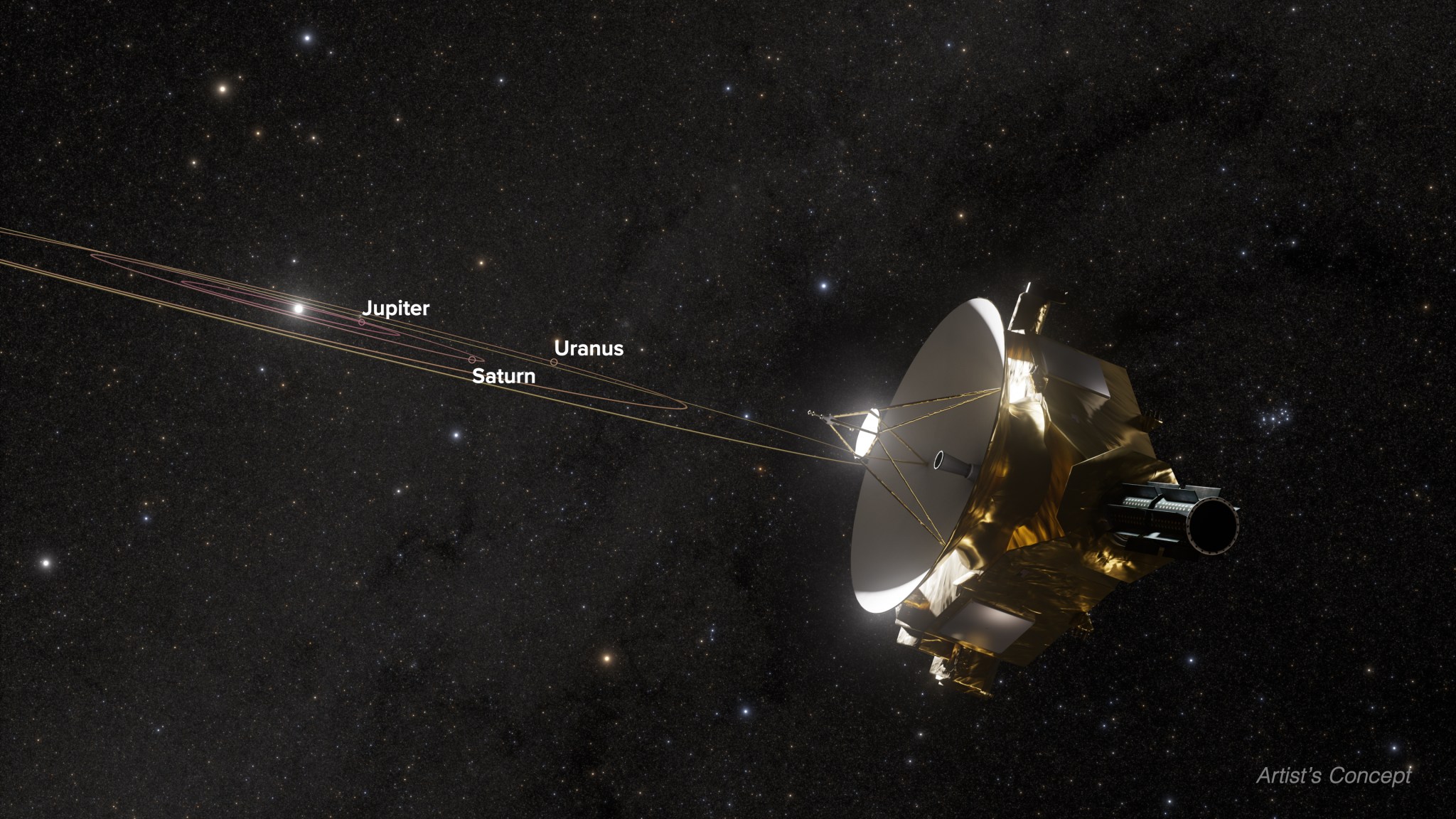
NASA’s upcoming Nancy Grace Roman Space Telescope, set to launch by 2027, will use a coronagraph to block out a star’s light to directly see gas giant exoplanets. NASA’s Habitable Worlds Observatory, in an early planning phase, will be the first telescope designed specifically to search for atmospheric biosignatures on Earth-sized, rocky planets orbiting other stars.
“Studying how known benchmarks like Uranus appear in distant imaging can help us have more robust expectations when preparing for these future missions,” concluded Hasler. “And that will be critical to our success.”
Launched in January 2006, New Horizons made the historic flyby of Pluto and its moons in July 2015, before giving humankind its first close-up look at one of these planetary building block and Kuiper Belt object, Arrokoth, in January 2019. New Horizons is now in its second extended mission, studying distant Kuiper Belt objects, characterizing the outer heliosphere of the Sun, and making important astrophysical observations from its unmatched vantage point in distant regions of the solar system.
The Uranus results are being presented this week at the 56th annual meeting of the American Astronomical Society Division for Planetary Sciences, in Boise, Idaho.
The Hubble Space Telescope has been operating for over three decades and continues to make ground-breaking discoveries that shape our fundamental understanding of the universe. Hubble is a project of international cooperation between NASA and ESA (European Space Agency). NASA’s Goddard Space Flight Center in Greenbelt, Maryland, manages the telescope and mission operations. Lockheed Martin Space, based in Denver, Colorado, also supports mission operations at Goddard. The Space Telescope Science Institute in Baltimore, Maryland, which is operated by the Association of Universities for Research in Astronomy, conducts Hubble science operations for NASA.
The Johns Hopkins Applied Physics Laboratory (APL) in Laurel, Maryland, built and operates the New Horizons spacecraft and manages the mission for NASA’s Science Mission Directorate. Southwest Research Institute, based in San Antonio and Boulder, Colorado, directs the mission via Principal Investigator Alan Stern and leads the science team, payload operations and encounter science planning. New Horizons is part of NASA’s New Frontiers program, managed by NASA’s Marshall Space Flight Center in Huntsville, Alabama.
Media Contacts:
Claire Andreoli
NASA’s Goddard Space Flight Center, Greenbelt, MD
claire.andreoli@nasa.gov
Hannah Braun, Ray Villard
Space Telescope Science Institute, Baltimore, MD
Science Contacts:
Samantha Hasler
Massachusetts Institute of Technology, Cambridge, MA
What's Your Reaction?



















.jpg?#)























